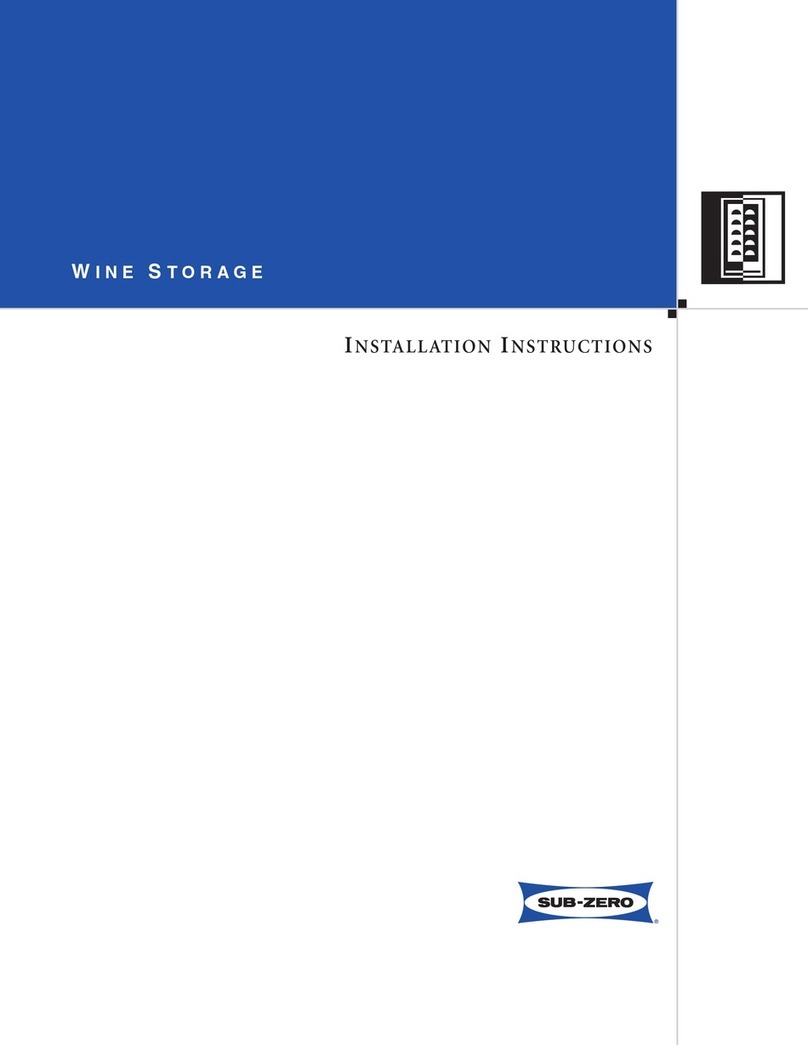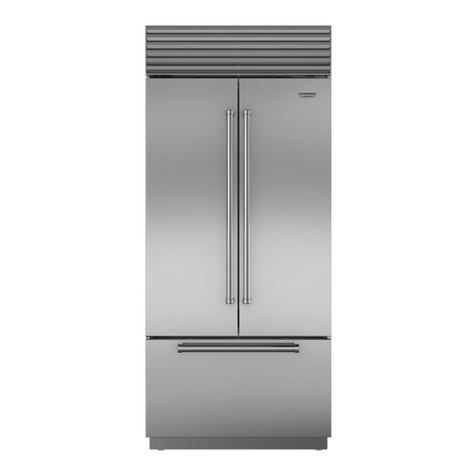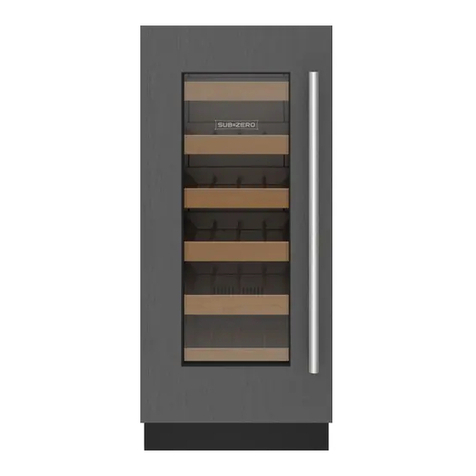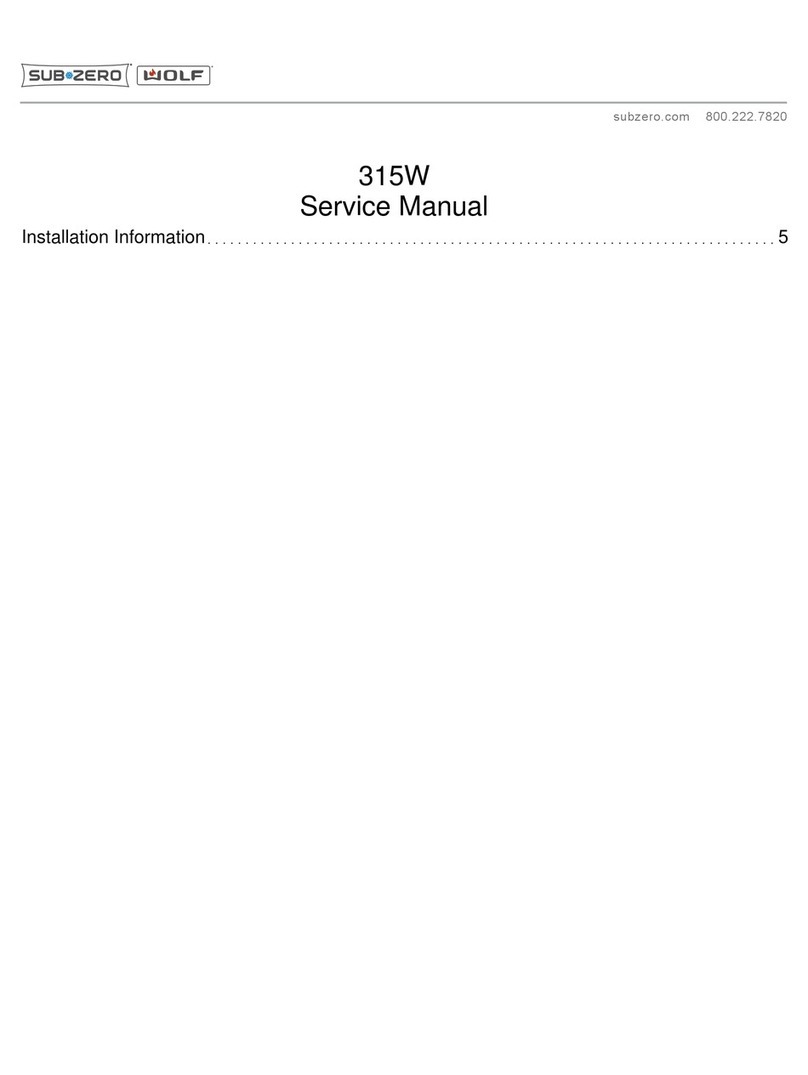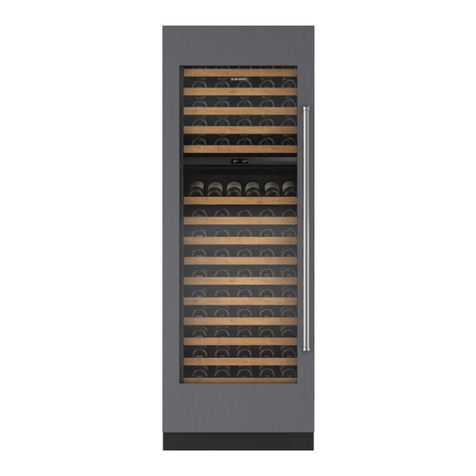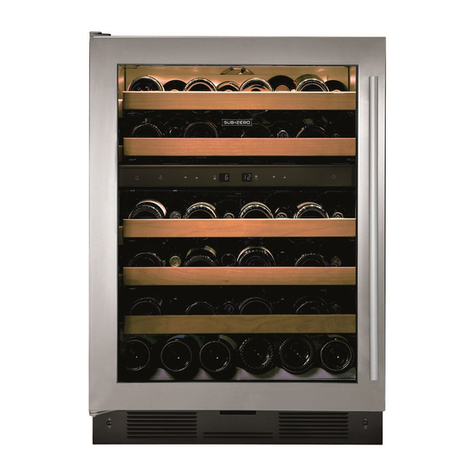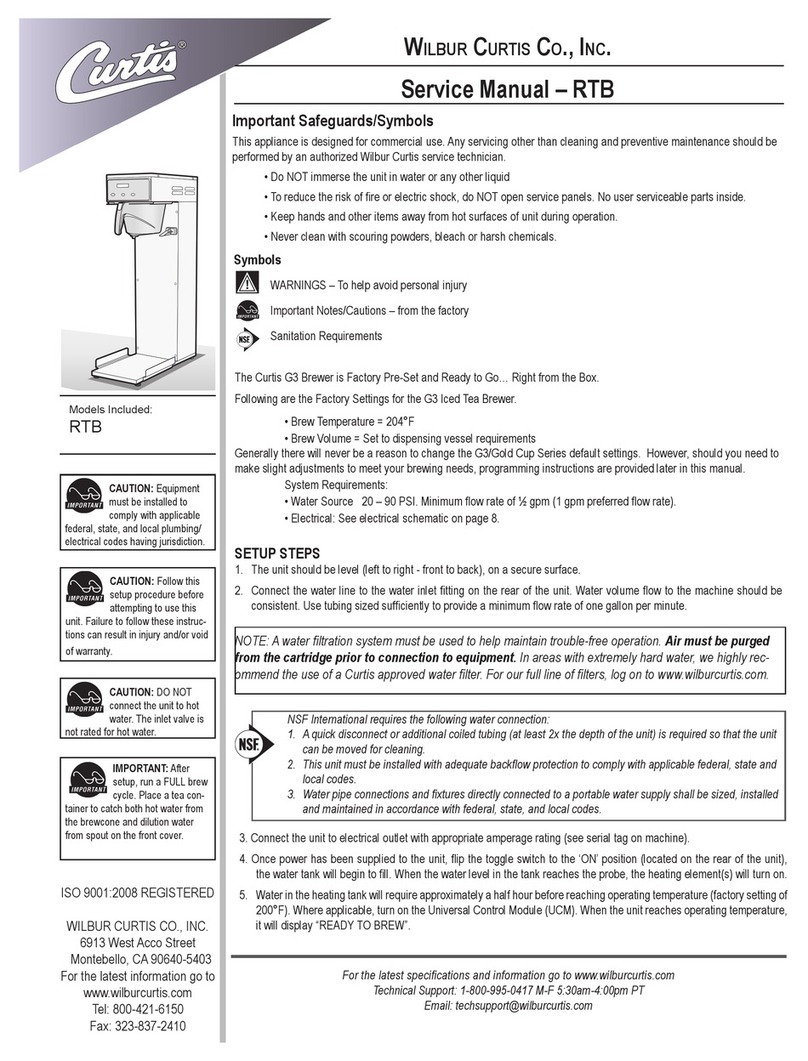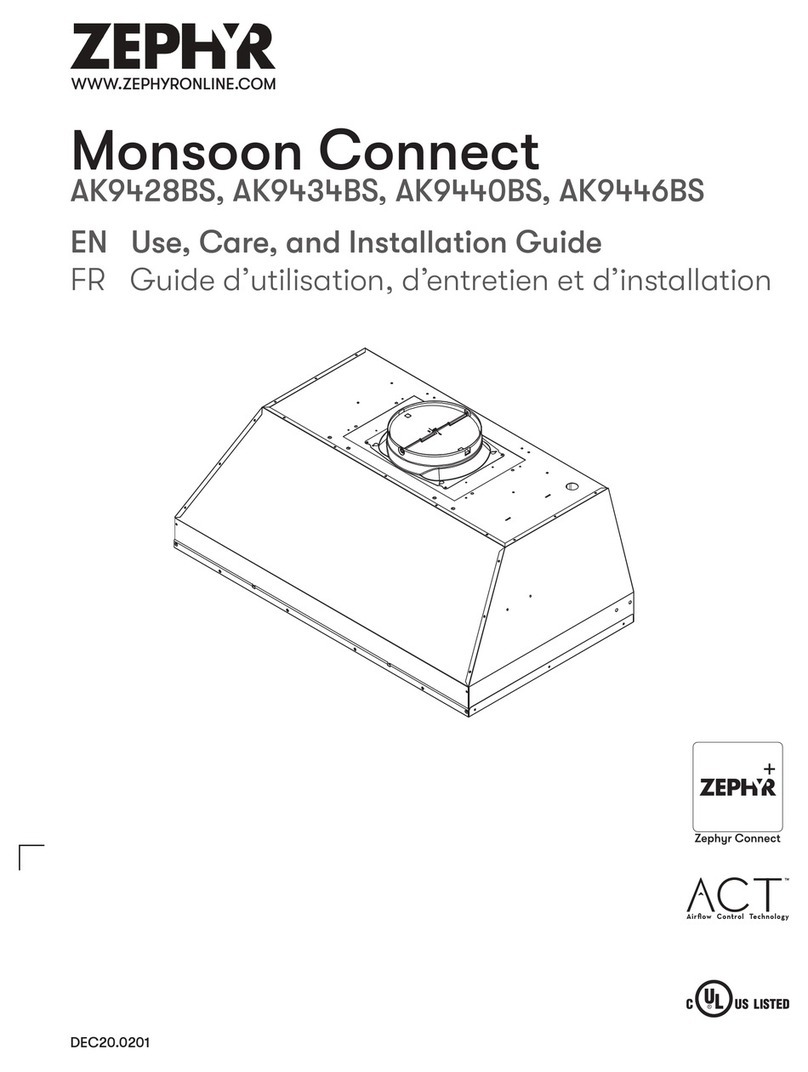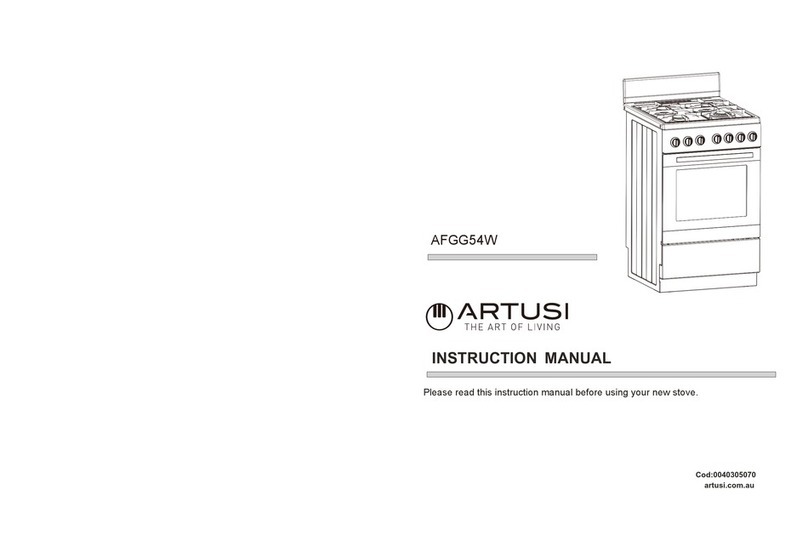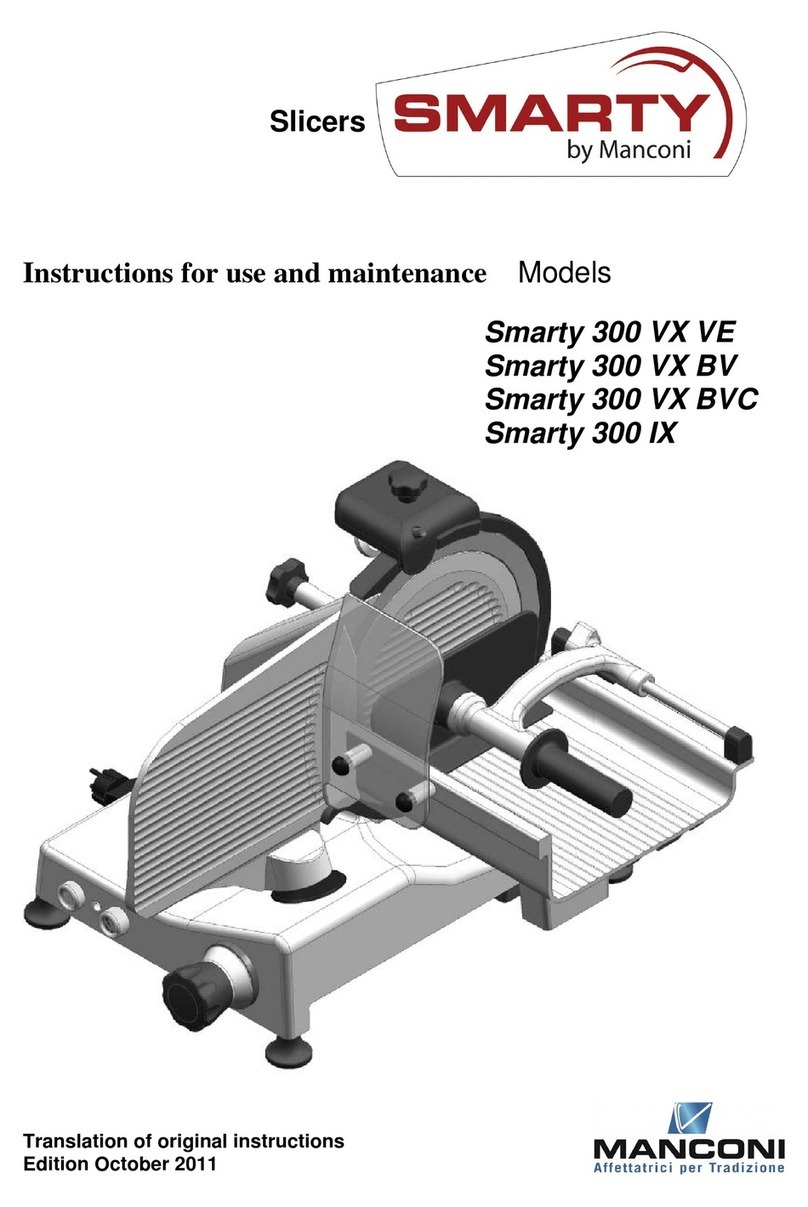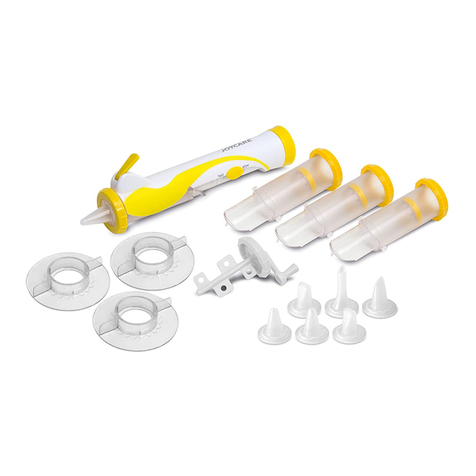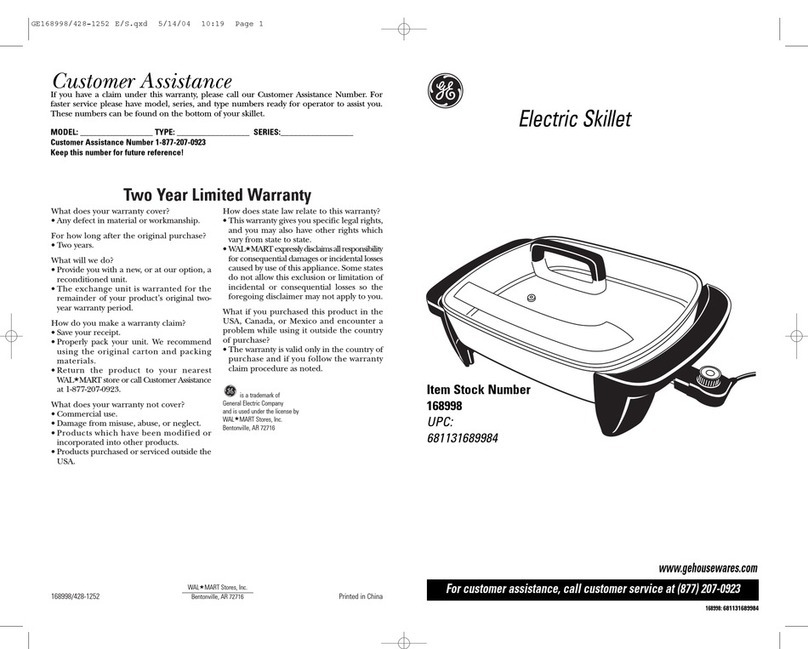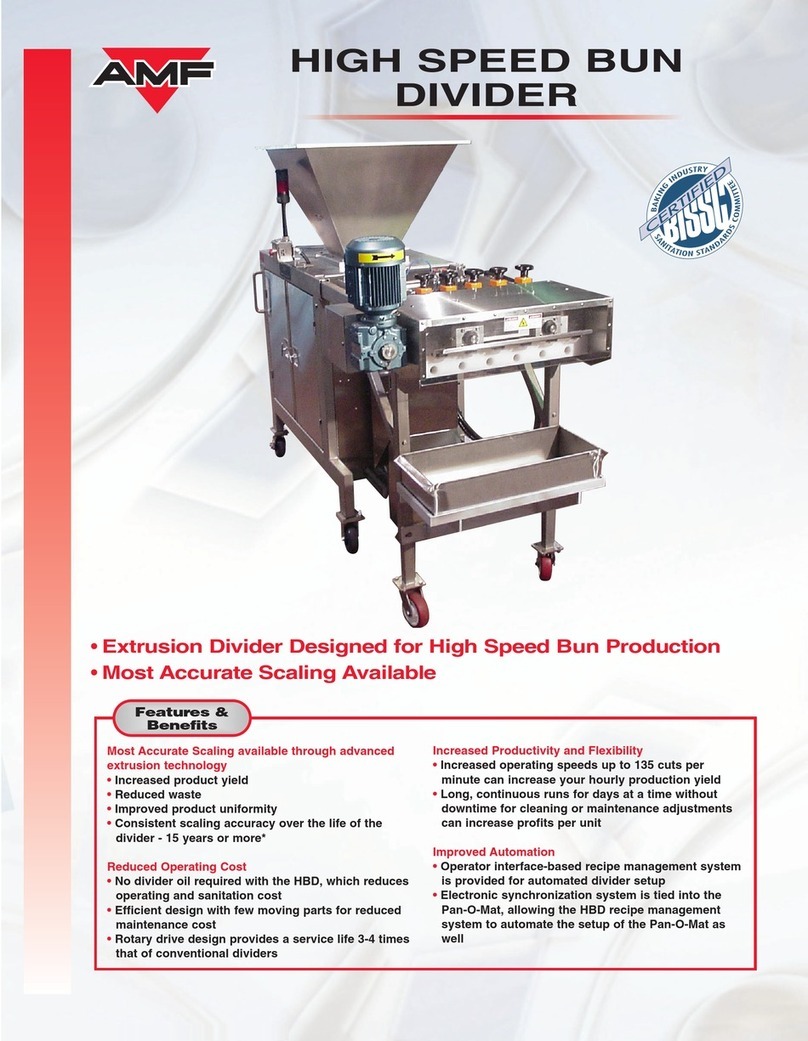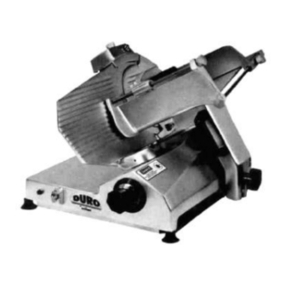Sub-Zero ICBBI Series Service manual

2-2
7025630 - Revision A - April, 2012
Installation Information International Built-In
International Built-In (ICBBI)
(ICBBI) Series
Series
INSTALLATION CONSIDERATIONS
This section uses some of the information in the ICBBI Series Installation Guide to address common installation
issues seen by Service Technicians. Improper installation, though not a valid service issue, has the potential to lead
to a call for service. Installation related complaints could include, but are not limited to: Unit leveling, unit move-
ment, door misalignment, improper door and drawer sealing, internal frost or condensation, exterior condensation,
warm compartment temperatures, etc.
The Built-In line offers the following design alternatives - framed, overlay and stainless steel models. The overlay
design has two possible installation applications - standard overlay and flush inset. Each of these design options
has specific installation requirements, which means it is vital that the unit match the planning and space needs.
NOTE: If additional installation information is needed, refer to the complete Installation Guide, or contact Sub-Zero
Service Department.
Tools and Materials Required
The following is a list of tools and materials that will assist in a proper installation.
• Phillips screwdriver set
• Slotted screwdriver set
• 6-Lobe, Torx type drive screwdriver set (Specific sizes, T-10, T-20 and T-25)
• 1.2 m (4') of 6.35 mm (1/4") copper tubing and saddle
• valve for the water line—part #4200880
• (do not use self-piercing valves)
• Copper tubing cutter
• Level - .6 m (2') and 1.2 m (4') recommended
• Appliance Dolly able to support 317 kg (700 lbs) and adequate manpower to handle the weight of the unit
• Various sized pliers
• Wrench set
• Allen wrench set
• 8 mm (5/16") hex bolt nut driver
• Crescent wrenches
• Cordless drill and assorted drill bits
• Masonite, plywood, 3.2 mm (1/8") pressed fiberboard or other suitable material to protect finished flooring
• Appropriate materials to cover and protect the home and its furnishings during installation
Site Preparation
The finished rough opening where the Built-In unit is to be installed must be properly prepared. Refer to the Finished
Rough Opening Specifications for the specific model on the following pages. The specifications for the framed, over-
lay and stainless steel applications are identical. The Finished Rough Opening Specifications are different for the
flush inset application, whether using custom panels or Sub-Zero accessory stainless flush inset panels. Make sure
that the rough opening dimensions, door swing clearance, electrical service and plumbing are correct for the model
being installed.
If installing two Built-In units side by side in the framed, overlay or stainless steel application, a separating filler strip
is recommended. Add the filler strip width to the finished rough opening dimension, and ALWAYS complete the
installation with the Anchoring Kit components.
For installation of two Built-In units side by side in the flush inset application, a dual installation kit will be necessary.
IMPORTANT NOTE: Built-in units installed side by side in the flush inset application cannot use the standard Sub-
Zero accessory overlay panels, and must have opposing hinges.
IMPORTANT NOTE: To operate properly, the door must open a minimum of ninety (90) degrees. Use a minimum
76 mm (3'') filler in corner installations to assure a ninety (90) degree door opening. Allow enough clearance in front
of the unit for full door swing.
IMPORTANT NOTE: Make sure the floor under the unit is level with the surrounding finished floor.

2-3 7025630 - Revision A - April, 2012
Installation Information
International Built-In
International Built-In (ICBBI)
(ICBBI) Series
Series
INSTALLATION SPECIFICATIONS
Over-and-Under Models—
Overlay (non-flush inset) and Stainless Steel
A
Model ICBBI-30U 749 mm
Model ICBBI-30UG 749 mm
Model ICBBI-36U 902 mm
Model ICBBI-36UG 902 mm
Dimensions are for finished rough openings.
INSTALLATION SPECIFICATIONS
Over-and-Under Models—
Flush Inset Application
A B
Model ICBBI-30U 749 mm 813 mm
Model ICBBI-30UG 749 mm 813 mm
Model ICBBI-36U 902 mm 965 mm
Model ICBBI-36UG 902 mm 965 mm
Dimensions are for finished rough openings.
1918 mm
178
mm
152
mm
E
LOCATE
ELECTRICAL
WITHIN
SHADED AREA
457 mm
W
LOCATE WATER SUPPLY
WITHIN SHADED AREA
152
mm
FRONT VIEWSIDE VIEW
2127 mm
OPENING
HEIGHT
A
OPENING WIDTH
76 mm
610 mm
OPENING
DEPTH
13 mm
457 mm
*
152
mm
610 mm
OPENING
DEPTH
SHUT-OFF
VALVE
OUTLINE OF
OVERLAY
OR STAINLESS
STEEL MODEL
TOP VIEW
*ANTI-TIP
BRACKET MUST NOT
INTERFERE
WITH WATER LINE.
REFER TO INSTALLATION
INSTRUCTIONS FOR COMPLETE
DETAILS.
EXTEND WATER LINE APPROX
914 mm FROM BACK WALL.
WATER LINE
1918 mm
178
mm
152
mm
E
LOCATE
ELECTRICAL
WITHIN
SHADED AREA
13 mm
457 mm
*
152
mm
610 mm
OPENING
DEPTH
665 mm
FLUSH INSET
DEPTH
SHUT-OFF
VALVE
OUTLINE
OF FLUSH INSET
APPLICATION WITH
19 mm
PANEL
457 mm
W
LOCATE WATER SUPPLY
WITHIN SHADED AREA
152
mm
FRONT VIEWSIDE VIEW
TOP VIEW
2127 mm
OPENING
HEIGHT
2134
mm
FLUSH
INSET
HEIGHT
6 mm 56 mm
**
76 mm
A
OPENING WIDTH
B
FLUSH INSET WIDTH
32
mm 32
mm
56
mm
**
610 mm
OPENING
DEPTH
665 mm
FLUSH INSET
DEPTH
*ANTI-TIP
BRACKET MUST NOT
INTERFERE
WITH WATER LINE.
REFER TO INSTALLATION
INSTRUCTIONS FOR COMPLETE
DETAILS.
**ASSUMES 19 mm PANEL
THICKNESS.
EXTEND WATER LINE APPROX
914 mm FROM BACK WALL.
WATER LINE
6
mm
32
mm
FLUSH INSET
DETAIL
56
mm
610 mm
OPENING
DEPTH
Finished Rough Opening Specifications (30” and 36” Over / Under Models)

2-4
7025630 - Revision A - April, 2012
Installation Information International Built-In
International Built-In (ICBBI)
(ICBBI) Series
Series
INSTALLATION SPECIFICATIONS
All Refrigerator / All Freezer Models—
Overlay (non-flush inset) and Stainless Steel
A
Model ICBBI-36R 902 mm
Model ICBBI-36RG 902 mm
Model ICBBI-36F 902 mm
Dimensions are for finished rough openings.
Models ICBBI-36R and ICBBI-36RG will not
require the water line connection.
INSTALLATION SPECIFICATIONS
All Refrigerator / All Freezer Models—
Flush Inset Application
A B
Model ICBBI-36R 902 mm 965 mm
Model ICBBI-36RG 902 mm 965 mm
Model ICBBI-36F 902 mm 965 mm
Dimensions are for finished rough openings.
Models ICBBI-36R and ICBBI-36RG will not
require the water line connection.
1918 mm
178
mm
152
mm
E
LOCATE
ELECTRICAL
WITHIN
SHADED AREA
457 mm
W
LOCATE WATER SUPPLY
WITHIN SHADED AREA
152
mm
FRONT VIEWSIDE VIEW
2127 mm
OPENING
HEIGHT
A
OPENING WIDTH
76 mm
610 mm
OPENING
DEPTH
13 mm
457 mm
*
152
mm
610 mm
OPENING
DEPTH
SHUT-OFF
VALVE
OUTLINE OF
OVERLAY
OR STAINLESS
STEEL MODEL
TOP VIEW
*ANTI-TIP
BRACKET MUST NOT
INTERFERE
WITH WATER LINE.
REFER TO INSTALLATION
INSTRUCTIONS FOR COMPLETE
DETAILS.
EXTEND WATER LINE APPROX
914 mm FROM BACK WALL.
WATER LINE
1918 mm
178
mm
152
mm
E
LOCATE
ELECTRICAL
WITHIN
SHADED AREA
13 mm
457 mm
*
152
mm
610 mm
OPENING
DEPTH
665 mm
FLUSH INSET
DEPTH
SHUT-OFF
VALVE
OUTLINE
OF FLUSH INSET
APPLICATION WITH
19 mm
PANEL
457 mm
W
LOCATE WATER SUPPLY
WITHIN SHADED AREA
152
mm
FRONT VIEWSIDE VIEW
TOP VIEW
2127 mm
OPENING
HEIGHT
2134
mm
FLUSH
INSET
HEIGHT
6 mm 56 mm
**
76 mm
A
OPENING WIDTH
B
FLUSH INSET WIDTH
32
mm 32
mm
56
mm
**
610 mm
OPENING
DEPTH
665 mm
FLUSH INSET
DEPTH
*ANTI-TIP
BRACKET MUST NOT
INTERFERE
WITH WATER LINE.
REFER TO INSTALLATION
INSTRUCTIONS FOR COMPLETE
DETAILS.
**ASSUMES 19 mm PANEL
THICKNESS.
EXTEND WATER LINE APPROX
914 mm FROM BACK WALL.
WATER LINE
6
mm
32
mm
FLUSH INSET
DETAIL
56
mm
610 mm
OPENING
DEPTH
Finished Rough Opening Specifications (36” All Refrigerator and All Freezer Models)

2-5 7025630 - Revision A - April, 2012
Installation Information
International Built-In
International Built-In (ICBBI)
(ICBBI) Series
Series
INSTALLATION SPECIFICATIONS
Side-by-Side Models—
Overlay (non-flush inset) and Stainless Steel
A
Model ICBBI-36S 902 mm
Model ICBBI-42S 1054 mm
Model ICBBI-42SD 1054 mm
Model ICBBI-48S 1207 mm
Model ICBBI-48SD 1207 mm
Dimensions are for finished rough openings.
INSTALLATION SPECIFICATIONS
Side-by-Side Models—
Flush Inset Application
A
Model ICBBI-36S 902 mm 965 mm
Model ICBBI-42S 1054 mm 1118 mm
Model ICBBI-42SD 1054 mm 1118 mm
Model ICBBI-48S
Model ICBBI-48SD 1207 mm 1270 mm
Dimensions are for finished rough openings.
1918 mm
178
mm
152
mm
E
LOCATE
ELECTRICAL
WITHIN
SHADED AREA
457 mm
W
LOCATE WATER SUPPLY
WITHIN SHADED AREA
152
mm
FRONT VIEWSIDE VIEW
2127 mm
OPENING
HEIGHT
A
OPENING WIDTH
76 mm
610 mm
OPENING
DEPTH
13 mm
457 mm
*
152
mm
610 mm
OPENING
DEPTH
SHUT-OFF
VALVE
OUTLINE OF
OVERLAY
OR STAINLESS
STEEL MODEL
TOP VIEW
*ANTI-TIP
BRACKET MUST NOT
INTERFERE
WITH WATER LINE.
REFER TO INSTALLATION
INSTRUCTIONS FOR COMPLETE
DETAILS.
EXTEND WATER LINE APPROX
914 mm FROM BACK WALL.
WATER LINE
1918 mm
178
mm
152
mm
E
LOCATE
ELECTRICAL
WITHIN
SHADED AREA
13 mm
457 mm
*
152
mm
610 mm
OPENING
DEPTH
665 mm
FLUSH INSET
DEPTH
SHUT-OFF
VALVE
OUTLINE
OF FLUSH INSET
APPLICATION WITH
19 mm
PANEL
457 mm
W
LOCATE WATER SUPPLY
WITHIN SHADED AREA
152
mm
FRONT VIEWSIDE VIEW
TOP VIEW
2127 mm
OPENING
HEIGHT
2134
mm
FLUSH
INSET
HEIGHT
6 mm 56 mm
**
76 mm
A
OPENING WIDTH
B
FLUSH INSET WIDTH
32
mm 32
mm
56
mm
**
610 mm
OPENING
DEPTH
665 mm
FLUSH INSET
DEPTH
*ANTI-TIP
BRACKET MUST NOT
INTERFERE
WITH WATER LINE.
REFER TO INSTALLATION
INSTRUCTIONS FOR COMPLETE
DETAILS.
**ASSUMES 19 mm PANEL
THICKNESS.
EXTEND WATER LINE APPROX
914 mm FROM BACK WALL.
WATER LINE
6
mm
32
mm
FLUSH INSET
DETAIL
56
mm
610 mm
OPENING
DEPTH
1207 mm 1270 mm
B
Finished Rough Opening Specifications (36”, 42” and 48” Side-by-Side Models)

2-6
7025630 - Revision A - April, 2012
Installation Information International Built-In
International Built-In (ICBBI)
(ICBBI) Series
Series
Anti-Tip Bracket Installation
610 mm (24”)
102 mm
MINIMUM
(4” MINIMUM)
102 mm
MINIMUM
(4” MINIMUM)
610 mm (24”)
13 mm MIN
(1/2” MIN)
Figure 2-4
Figure 2-5
THE UNIT COULD TIP FORWARD UNDER CERTAIN
LOAD CONDITIONS. FAILURE TO INSTALL BOTH
ANTI-TIP BRACKETS AND EXTEND LEVELERS TO
FLOOR ACCORDING TO INSTALLATION MANUAL
COULD RESULT IN SERIOUS INJURY OR DEATH.
IMPORTANT NOTE: Placement of the two anti-tip brackets
is critical. They must be installed 610 mm (24'') from the
front of the opening to the back of the brackets and a mini-
mum of 102 mm (4'') from the sides of the rough opening.
This depth will increase to 665 mm (26-3/16'') for a flush
inset installation based on 19 mm (3/4'') thick decorative
panels. Failure to properly position the anti-tip brackets will
prevent them from engaging the unit should it tip forward.
Standard Installation Procedure:
The two anti-tip brackets must be located 610 mm (24'')
back from front of rough opening and a minimum of 102
mm (4'') from sides of rough opening. This will ensure that
ant-tip brackets properly engage anti-tip bar at back of unit.
NOTE: Both brackets MUST be used.
Wood Floor Applications: (See Figure 2-4)
After properly locating anti-tip brackets in rough opening,
drill pilot holes 121 mm (3/16'') diameter maximum. Then,
use the #12 X 2-1/2” PH Pan HD Zinc Screws and #12 Flat
Washers to secure the brackets in place.
NOTES:
• Make sure screws penetrate flooring material and wall
stud or wall plate a minimum of 19 mm (3/4'').
• If #12 X 2-1/2'' screws do not hit a wall stud or the wall
plate in any of the brackets back holes, use the #8-18 X
1-1/4” PH Truss HD Screws and #12 Flat Washers with
the Nylon Zip-It Wall Anchors.
Concrete Floor Applications: (See Figure 2-5)
After properly locating anti-tip brackets in rough opening,
drill pilot holes 121 mm (3/16'') diameter maximum in the
wall studs and/or wall plate, then drill 242 mm (3/8'') diame-
ter holes into the concrete a minimum of 1/2“ (13 mm)
deep. Then, use the #12 X 2-1/2” PH Pan HD Zinc Screws
and #12 Flat Washers to secure the brackets to the wall,
and use the 3/8”-16 X 3-3/4” Wedge Anchors to secure the
brackets to the floor.
NOTES:
• Make sure screws penetrate wall stud or wall plate a
minimum of 3/4'' (19 mm).
• If #12 X 2-1/2'' screws do not hit a wall stud or the wall
plate in any of the brackets back holes, use the#8-18 X
1-1/4” PH Truss HD Screws and #12 Flat Washers with
the Nylon Zip-It Wall Anchors.

2-7 7025630 - Revision A - April, 2012
Installation Information
International Built-In
International Built-In (ICBBI)
(ICBBI) Series
Series
Flush Inset Installation Procedure:
The two anti-tip brackets must be located 610 mm (24'')
back from front of rough opening and a minimum of 102
mm (4'') from sides of rough opening. This will ensure that
ant-tip brackets properly engage anti-tip bar at back of unit.
NOTE: Both brackets MUST be used.
Wood Floor Applications: (See Figure 2-6)
After properly locating anti-tip brackets in rough opening,
drill pilot holes 121 mm (3/16'') diameter maximum. Then,
use the #12 X 2-1/2” PH Pan HD Zinc Screws and #12 Flat
Washers to secure the brackets in place.
NOTES:
• Make sure screws penetrate flooring material and wall
stud or wall plate a minimum of 19 mm (3/4'').
• If #12 X 2-1/2'' screws do not hit a wall stud or the wall
plate in any of the brackets back holes, use the #8-18 X
1-1/4” PH Truss HD Screws and #12 Flat Washers with
the Nylon Zip-It Wall Anchors.
Concrete Floor Applications: (See Figure 2-7)
After properly locating anti-tip brackets in rough opening,
drill pilot holes 121 mm (3/16'') diameter maximum in the
wall studs and/or wall plate, then drill 242 mm (3/8'') diame-
ter holes into the concrete a minimum of 13 mm (1/2'')
deep. Then, use the #12 X 2-1/2” PH Pan HD Zinc Screws
and #12 Flat Washers to secure the brackets to the wall,
and use the 3/8”-16 X 3-3/4” Wedge Anchors to secure the
brackets to the floor.
NOTES:
• Make sure screws penetrate wall stud or wall plate a
minimum of 19 mm (3/4'').
• If #12 X 2-1/2'' screws do not hit a wall stud or the wall
plate in any of the brackets back holes, use the #8-18 X
1-1/4” PH Truss HD Screws and #12 Flat Washers with
the Nylon Zip-It Wall Anchors.
* With 19 mm (3/4”)
Door Panels
102 mm
MINIMUM
(4” MINIMUM)
610 mm (24”)
*56 mm
(2-3/16”)
32 mm
(1-1/4”)
13 mm MIN
(1/2” MIN)
* With 19 mm (3/4”)
Door Panels
102 mm
MINIMUM
(4” MINIMUM)
610 mm (24”)
*56 mm
(2-3/16”)
32 mm
(1-1/4”)
Figure 2-6
Figure 2-7

2-8
7025630 - Revision A - April, 2012
Installation Information International Built-In
International Built-In (ICBBI)
(ICBBI) Series
Series
Electrical Requirements
A 220-240 V AC, 50/60 Hz, 10 amp circuit breaker and
electrical supply are required. A separate circuit, servic-
ing only this appliance, is required.
All Sub-Zero Built-In models are equipped with a power
supply cord with a 3-prong grounding plug, which must
be plugged into a mating 3-prong grounding-type wall
receptacle. Follow the National Electrical Code and
local codes and ordinances when installing the recepta-
cle. For location of the electrical supply, refer to the
Finished Rough Opening Specifications illustration for
your specific model.
IMPORTANT NOTES:
• A ground fault circuit interrupter (GFCI) is not recom-
mended and may cause interruption of operation.
• The Built-In line is equipped with an appliance inlet
type device. This allows easy replacement of the
power cord. The appliance inlet is located at the top
right of the unit toward the rear. When replacing the
power cord make sure that the replacement cord is
rated HO5VV-F3G1.0 or equivalent to ensure safe
operation of the appliance.
DO NOT USE AN EXTENSION CORD OR TWO
PRONG ADAPTER. ELECTRICAL GROUND IS
REQUIRED ON THESE APPLIANCES. DO NOT
REMOVE POWER SUPPLY CORD GROUND
PRONG!
The outlet must be checked by a qualified electri-
cian to be sure that it is wired with the correct
polarity. If the power and neutral polarity are
reversed at the outlet, the appliance will not oper-
ate. Verify that the outlet provides 220-240 V AC
and is properly grounded.
Plumbing Requirements
All International Built-In models with an automatic ice
maker are also equipped with a factory installed water
filter manifold and filter bypass plug. This filter plug can
be replaced with a water filter.
This water supply system operates on water pressure
between 2.1 bar (30 psi) to 6.9 bar (100 psi).
IMPORTANT NOTE: A reverse osmosis system can be
used, provided there is constant water pressure of 2.1
bar (30 psi) to 6.9 bar (100 psi) supplied to the unit at
all times. If a reverse osmosis system is used, it is rec-
ommended that the water filter bypassed plug not be
removed.
Rough in the cold water supply line using 6.35 mm
(1/4") OD copper line. The water line should be routed
up through the floor within 13 mm (1/2'') from the back
wall and no higher than 76 mm (3'') off the floor. If the
water line comes through the wall, make sure it is no
more than 76 mm (3'') from the floor.
Regardless of the routing, allow .9 m (3') of excess cop-
per tubing to remain outside the wall or floor for easy
connection to the unit. The water supply line should be
locate within the shaded area indicated in the Finished
Rough Opening Specifications illustration for the specif-
ic model.
An easily accessible shut-off valve should be used
between the water supply and the unit. Do not use self-
piercing valves. A saddle valve kit (part #4200880) is
available from a Sub-Zero dealer or parts distributor.
It is not recommended that the ice maker be connected
to a softened water supply. Water softener chemicals,
such as salt from a malfunctioning softener, can dam-
age the ice maker and lead to poor ice quality. If a soft-
ened water supply cannot be avoided, be sure that the
water softener is well maintained and operating proper-
ly.
IMPORTANT NOTE: All installations must meet local
plumbing code requirements.
ALWAYS SWITCH POWER OFF AT THE CIRCUIT
BREAKER BEFORE PERFORMING ANY INSTAL-
LATION, SERVICE OR MAINTENANCE.

2-9 7025630 - Revision A - April, 2012
Installation Information
International Built-In
International Built-In (ICBBI)
(ICBBI) Series
Series
Water Line Connections
Approximately .9 m (3') of 6.35 mm (1/4") OD plastic
tubing is connected to the unit with a preassembled
6.35 mm (1/4”) compression connection at the end. This
tubing is located under the unit.
The water line fitting connection kit, provided with the
unit, contains a 6.35 mm (1/4") compression union fit-
ting for connection to the household water supply line.
The compression nut and sleeve should be placed on
the water line and fastened to the connection at the end
of the tubing under the unit. Do not over tighten.
Check all water line fittings for leaks. Make sure that
the drain pan can be installed and/or removed without
any water line interference.
IMPORTANT NOTE: The water line should be purged
prior to final connection to the unit. This will remove
any debris that may be present in the tubing from
installing the new water line.
IMPORTANT NOTE: The customer should be made
aware that the ice maker will not produce ice immedi-
ately, and that the first few batches of ice produced
should be discarded, allowing twenty-four (24) hours for
proper ice production.
IMPORTANT NOTE: Caution must be taken to not
expose the water lines leading to the refrigerator to
freezing temperatures. Failure to do so could cause
damage to the product and home.
Water Filter
A water filter is available from a Sub-Zero dealer or
parts distributor.
NOTE: Whenever the water filter or the filter bypass
plug is removed from the unit, the water supply will be
interrupted.

2-10
7025630 - Revision A - April, 2012
Installation Information International Built-In
International Built-In (ICBBI)
(ICBBI) Series
Series
Leveling the Unit
Once the unit is in position, the front leveling legs must
be extended down to the floor by turning them clock-
wise. The front leveling legs are also used to make
front height adjustments, turn the leveling legs clock-
wise to raise the unit and counterclockwise to lower it.
The rear height adjustment can be performed at the
front of the base using a 5/16" socket to turn the adjust-
ing bolt that reaches to rear leveler/roller assembly.
Turn the 5/16" hex bolt clockwise to raise the rear of the
unit or counterclockwise to lower it.
When the unit is leveled properly, door and/or drawer
adjustments are less likely to be necessary. Refer to the
illustration below for location of the rear roller base
adjustment.
IMPORTANT NOTE: Be sure to reference “level” of the
unit to the floor, not “squareness” of the unit to the sur-
rounding cabinetry. This could affect the operation of
the unit, such as door closing.
REAR
ADJUSTING
BOLT
FRONT
LEVELING LEG
UNIT BASE ASSEMBLY
REAR
ROLLER / LEVELING
ASSEMBLY
Figure 2-11. Unit Leveling
Door Adjustments
The doors on the Built-In Series side-by-side and single
door models can be adjusted in three ways: up and
down, side to side, and in and out. The doors on over /
under models can be adjusted in two ways: side to
side, and in and out.
IMPORTANT NOTE: Door adjustments should only be
performed after the unit is installed and properly lev-
eled.
Door Height Adjustment Procedure:
Using a 1/4" allen wrench, turn the bottom hinge
adjuster bolt clockwise to raise the door and counter-
clockwise to lower the door. (See Figure 2-12)
DOOR
HINGE ADJUSTER BOLT
Figure 2-12. Door Height Adjustment

2-11 7025630 - Revision A - April, 2012
Installation Information
International Built-In
International Built-In (ICBBI)
(ICBBI) Series
Series
Side to Side and In and Out Adjustment Procedure:
IMPORTANT NOTE: Side to side and in and out
adjustments only affect the top of the door. The bottom
hinge is stationary, except for up and down adjust-
ments.
1. Slightly loosen the two upper cabinet hinge mount-
ing bolts using a 1/2" wrench (See Figure 2-13).
2. For side to side adjustments, use a 3/8" open-end
wrench to turn the bolt mounted left to right in the
top hinge assembly in the appropriate direction (See
Figure 2-13).
3. For in and out adjustments, use a 5/32" allen
wrench to turn the bolt mounted front to back in the
top hinge assembly in the appropriate direction (See
Figure 2-13).
LEFT TO RIGHT
ADJUSTMET BOLT
IN AND OUT
ADJUSTMET BOLT
MOUNTING BOLTS
Figure 2-13. Door Adjustment,
Left to Right and In and Out
90-Degree Door Stop
The doors on all Built-in Series units open to 110-
degrees. An optional 90-degree door stop kit is sup-
plied with the unit, and is also available through a Sub-
Zero dealer or distributor.
The 90-degree door stop will be installed in the top
hinge of the door.
Door Stop Installation Procedure:
1. Open door to approximately 90 degrees.
2. At top of door, insert door stop cam down
between door hinge and door closer arm as
shown in Figure 2-14.
3. Insert screw through door stop and into door as
shown in Figure 2-14.
Figure 2-14. 90 Degree Door Stop

2-12
7025630 - Revision A - April, 2012
Installation Information International Built-In
International Built-In (ICBBI)
(ICBBI) Series
Series
Door and Drawer Panels
Regardless of the installation application, it may be necessary to remove and/or install a door or drawer panel. To
do this, the handle or handle-side trim will need to be removed first. The handle or handle-side trim is attached to
the door or drawer with screws, and these screws are concealed by a screw cover. Follow the procedures below to
access the mounting screws and remove a handle or handle-side trim in order to remove and/or install a door or
drawer panel.
IMPORTANT NOTE: The weight of a door or drawer panel cannot exceed 23 kg (50 lbs).
IMPORTANT NOTE: Depending on the thickness of a wood panel used on a framed application, it may be neces-
sary to router a recessed area into the panel for proper finger clearance under the door handle. Optional extended
handles are also available that offer an additional 19 mm (3/4'') of clearance under the handle.
Door Handle / Handle-Side Trim Removal Procedure:
1. At the top of the door, insert a flat blade screwdriver into the channel of the screw cover and push the cover
away form the handle or handle-side trim, disengaging the screw cover from the clips (See Figures 2-15A and 2-
15B).
2. With a T-20, 6-lobe Torx type bit, extract the handle or handle-side trim mounting screws and pull the handle or
trim from the door (See Figures 2-16A and 2-16B).
DOOR
SCREW COVER
HANDLE
Figure 2-15A. Screw Cover Removal
with Handle
HANDLE
Figure 2-16A. Handle Removal
DOOR
SCREW COVER
HANDLE-SIDE TRIM
Figure 2-15B. Screw Cover Removal
with Handle-Side Trim
HANDLE-SIDE TRIM
Figure 2-16B. Handle-Side Trim
Removal

2-13 7025630 - Revision A - April, 2012
Installation Information
International Built-In
International Built-In (ICBBI)
(ICBBI) Series
Series
SCREW COVER
HANDLE
Figure 2-17A. Screw Cover Removal
with Handle
DRAWER
HANDLE
Figure 2-18A. Handle Removal
SCREW COVER
HANDLE-SIDE TRIM
Figure 2-17B. Screw Cover Removal
with Handle-Side Trim
DRAWER
HANDLE-SIDE TRIM
Figure 2-18B. Handle-Side Trim
Removal
Drawer Handle / Handle-Side Trim Removal Procedure:
1. At the back right-hand side of the drawer handle or handle-side trim, insert a flat blade screwdriver into the notch
in the screw cover and pry the cover away form the handle or handle-side trim, disengaging the screw cover
from the clips (See Figures 2-17A and 2-17B).
2. With a T-20, 6-lobe Torx type bit, extract the handle or handle-side trim mounting screws and pull the handle or
trim from the drawer (See Figures 2-18A and 2-18B).

2-14
7025630 - Revision A - April, 2012
Installation Information International Built-In
International Built-In (ICBBI)
(ICBBI) Series
Series
Glasswell - Dispenser Assembly
If attempting to remove and/or install a door panel on the refrigerator door of a dispenser model, note that the proce-
dure is the same as that listed on the previous pages. However, the dispenser control panel and glasswell bezel will
also need to be removed.
Dispenser Control Panel Removal Procedure:
1. Extract the center post of the plastic rivets using a fingernail, putty knife, or similar device (See Figure 2-19),
then pull the rivets out.
2. Pull the dispenser control panel down and disconnect the ribbon cable (See Figure 2-20).
NOTE: When reassembling:
a. Make sure blue side of ribbon cable is up when connecting to dispenser control panel.
b. Take care not to pinch or kink ribbon cable when reassembling.
Glasswell Bezel Removal Procedure:
1. Remove the dispenser control panel first, then lift out the glasswell grille to access the bottom screws.
2. Extracting the bezel mounting screws from each corner, then pull the bezel forward (See Figure 2-21).
ICE
WATER
LIGHT
RIVETS
Figure 2-19. Dispenser Control
Panel Removal, Extract rivets
Figure 2-21. Glasswell Bezel
Removal
RIBBON
CABLE
Figure 2-20. Dispenser Control
Panel Removal, Disconnect
Ribbon Cable

2-15 7025630 - Revision A - April, 2012
Installation Information
International Built-In
International Built-In (ICBBI)
(ICBBI) Series
Series
Anchoring the Unit
After the unit has been installed and leveled, it is rec-
ommended that it be anchored to the surrounding cabi-
netry. This will assure a secure installation.
IMPORTANT NOTE: Be sure the unit is level before
anchoring it to the surrounding cabinetry.
Anchoring Procedure:
1. Open the grille, then install anchor screws through
the grille frame clearance holes and the grill frame
support brackets into the cabinetry (See Figure 2-
22). There are several hole locations provided.
2. At the unit roller base assemblies, locate the
anchoring holes, one in each assembly. Install
anchor screws, keeping in mind that they will need
to be driven in at an angle (See Figure 2-23).
ANCHOR SCREWS
Figure 2-22. Anchoring at Top of Unit
ANCHOR SCREW
Figure 2-23. Anchoring at Bottom of Unit
Other manuals for ICBBI Series
1
This manual suits for next models
4
Table of contents
Other Sub-Zero Kitchen Appliance manuals
